Results 1 to 6 of 6
Thread Information
Users Browsing this Thread
There are currently 1 users browsing this thread. (0 members and 1 guests)
-
12-15-2018, 04:33 PM #1
Japan has so many vacant homes it's giving them away
Japan has so many vacant homes it's giving them away
By Emiko Jozuka, CNNUpdated 4:24 AM ET, Thu December 6, 2018The series on Japan's demographic reckoning is supported by the Pulitzer Center on Crisis Reporting. None of the material in this series may be reproduced without an explicit credit to CNN and the Pulitzer Center.
Okutama, Japan (CNN)Four years ago, Naoko and Takayuki Ida were given a house. For free.
It's a spacious, two-story home nestled amid trees on a winding country road in the small town of Okutama, in Tokyo prefecture. Before moving, the couple and their children -- two teenagers and a five-year-old -- were all living with Naoko's parents.
"We had to do a lot of repair work (on our new home), but we'd always wanted to live in the countryside and have a big garden," said Naoko, 45.
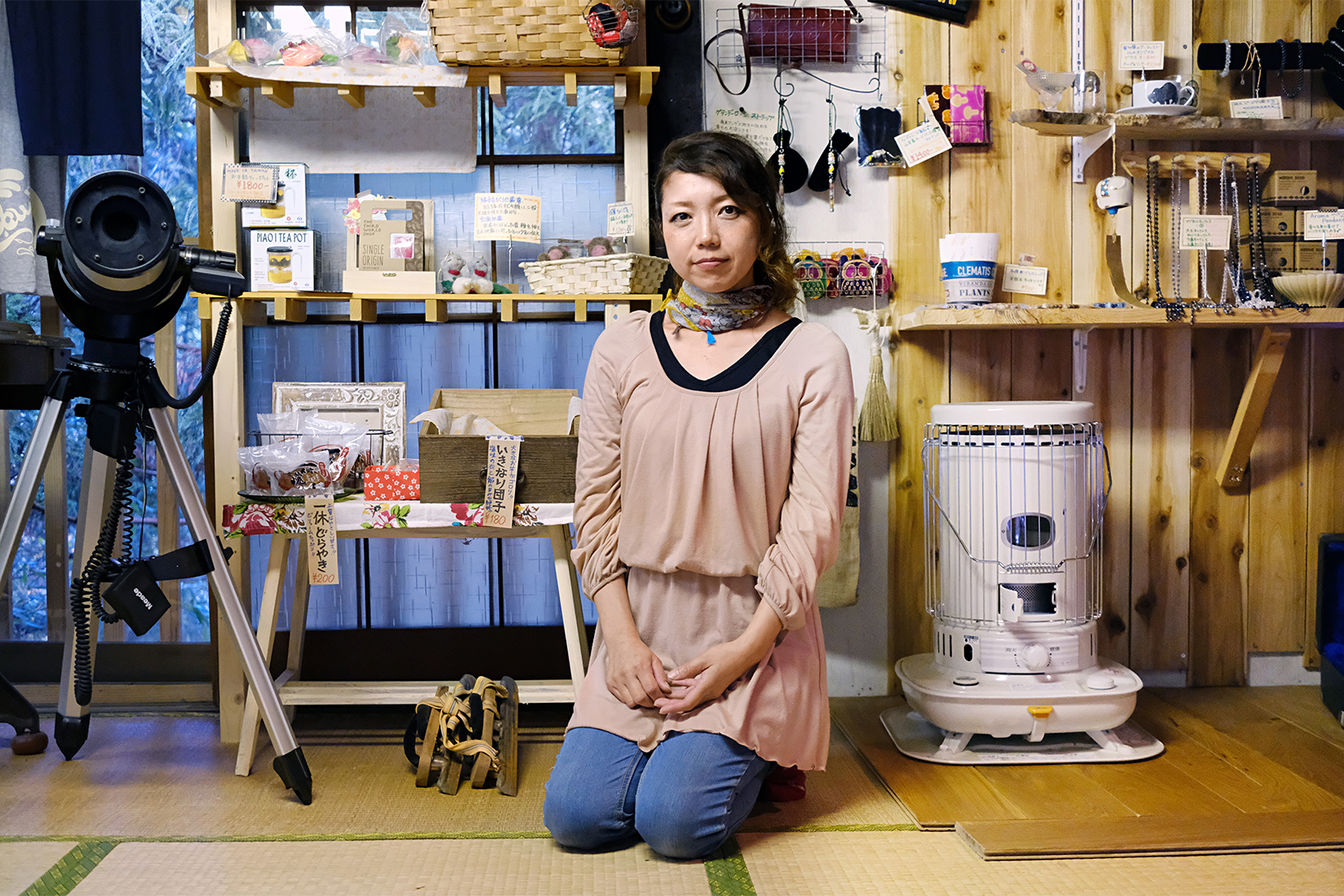 Naoko Ida converted an old Japanese-style house into a cafe.
Naoko Ida converted an old Japanese-style house into a cafe.
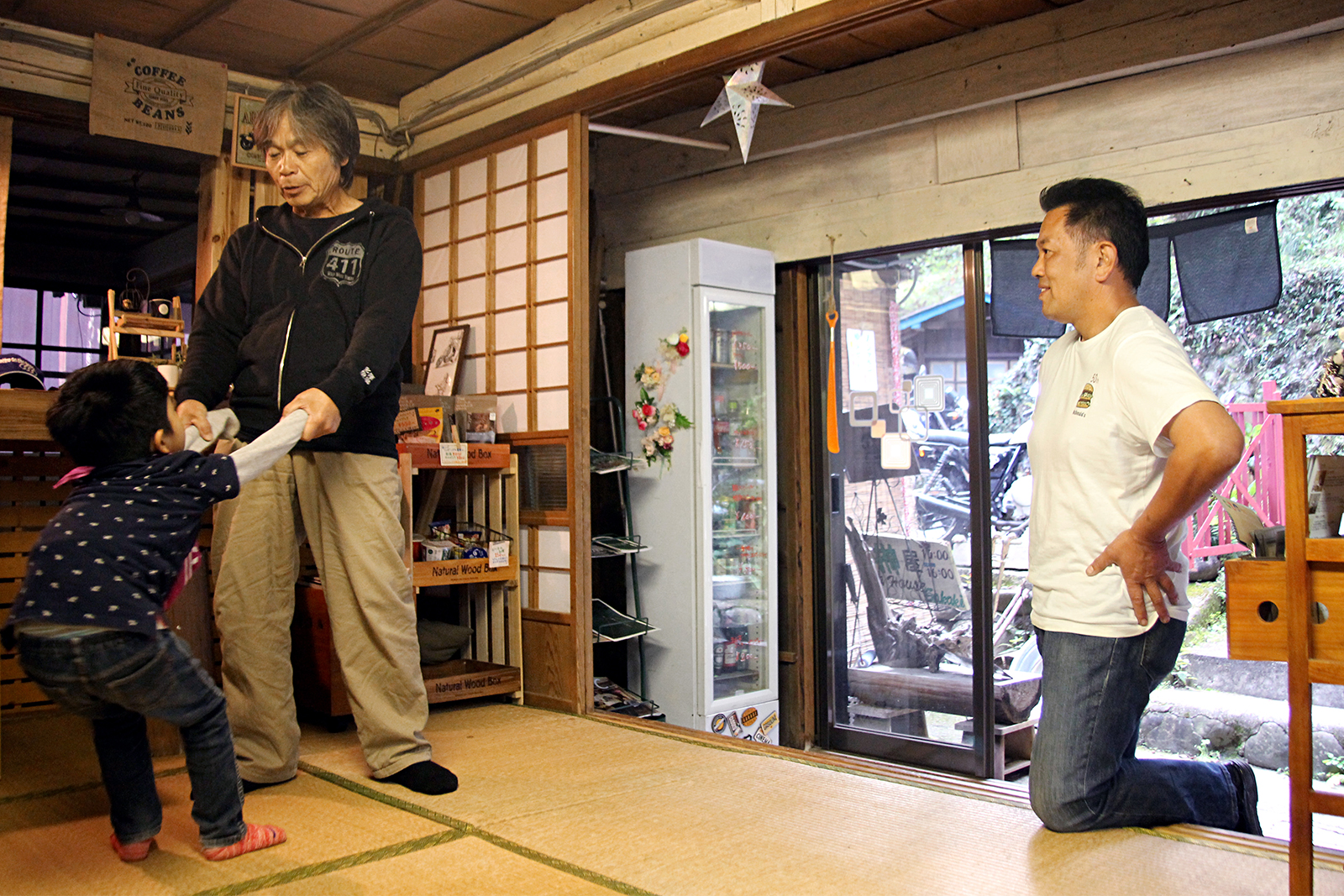 It's a popular stop among bikers.
It's a popular stop among bikers.
 Ida opened her cafe in September 2017.
Ida opened her cafe in September 2017.
A free house may sound like a scam.
But Japan faces an unusual property problem: it has more homes than people to live in them.
In 2013, there were 61 million houses and 52 million households, according to the Japan Policy Forum. And the situation is poised to get worse.
Japan's population is expected to decline from 127 million to about 88 million by 2065, according to the National Institute of Population and Social Security, meaning even fewer people will need houses. As young people leave rural areas for city jobs, Japan's countryside has become haunted by deserted "ghost" houses, known as "akiya."
It's predicted that by 2040, nearly 900 towns and villages across Japan will no longer exist -- and Okutama is one of them. In that context, giving away property is a bid for survival.
"In 2014, we discovered that Okutama was one of three Tokyo (prefecture) towns expected to vanish by 2040," says Kazutaka Niijima, an official with the Okutama Youth Revitalization (OYR) department, a government body set up to repopulate the town.
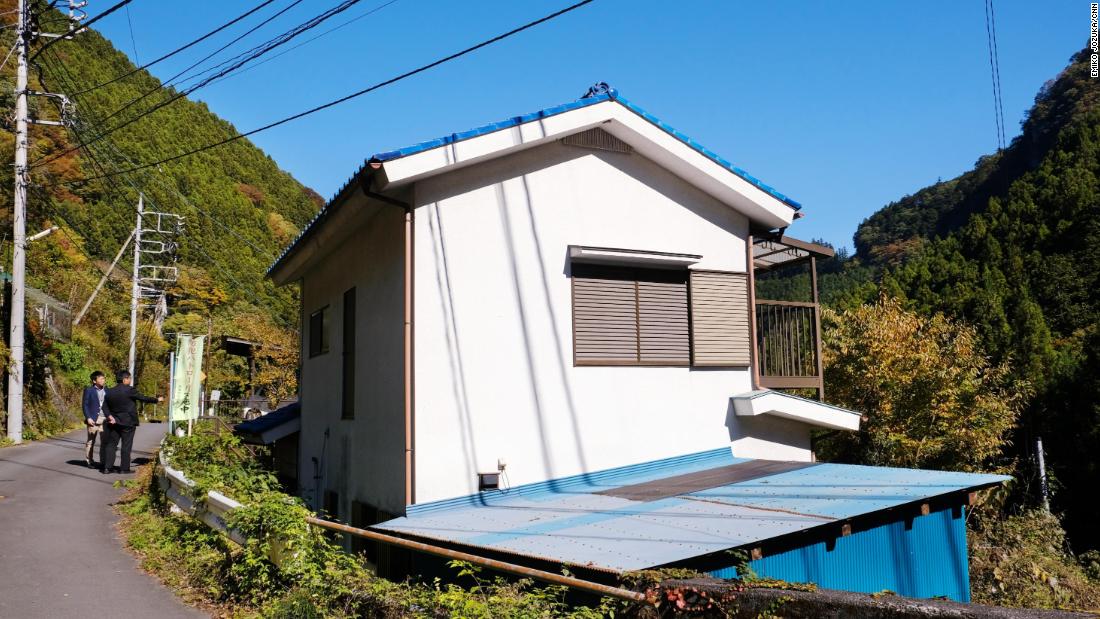
Vacant houses are a common sight across Japan as the country's population shrinks and many young people move to urban areas.
Akiya bank schemes
Okutama is a two-hour train ride west from Tokyo prefecture's dense, neon-soaked center.
In the 1960s, it boasted a population of more than 13,000, as well as a profitable timber trade. But after the liberalization of imports and falling demand for timber in the 1990s, most young people left for the city. Today, Okutama has just 5,200 residents.
In 2014, it established an "akiya bank" -- or vacant house scheme -- which matches prospective buyers with aging homeowners and empty properties. While akiya banks are now common across Japan, each town sets its own conditions.
For example, Okutama subsidizes home repairs for new akiya residents, and encourages akiya owners to relinquish their vacant properties by offering up to $8,820 per 100 square meters (1,076 sq feet).
However, it stipulates that those who receive a free home or renovation assistance must be aged under 40, or be in a couple with at least one child under 18-years-old and one partner aged under 50. Akiya applicants must also commit to settling in the town permanently and invest in upgrading second-hand homes.
But even giving away homes is tough in a country where people prefer new builds.
 A view over Okutama, 1955. (Okutama Town)
A view over Okutama, 1955. (Okutama Town)
 Constructions for Ogouchi dam in 1945. (Okutama Town)
Constructions for Ogouchi dam in 1945. (Okutama Town)
Second-hand homes
Niijima leads the way into a vacant, box-like house with a blue roof and white walls that was built 33 years ago. Though sturdy on the outside, the musty smell inside hints at the decade it has sat empty. The kitchen is in need of a makeover, and the tatami floor is faded.
"It will suit someone who likes DIY," Niijima said with a grin.
There are 3,000 homes in Okutama, and about 400 are vacant -- only half of which are believed to be salvageable. The rest are either too dilapidated or were built in areas at risk of landslides.
In the 20th century, Japan experienced two major population spikes: the first after World War II and the second during the economic explosion of the 1980s. Both created housing shortages which led to cheap, mass-produced homes that were quickly erected in densely populated towns and cities.
 These Okutama locals regularly meet to play gate ball.
These Okutama locals regularly meet to play gate ball.
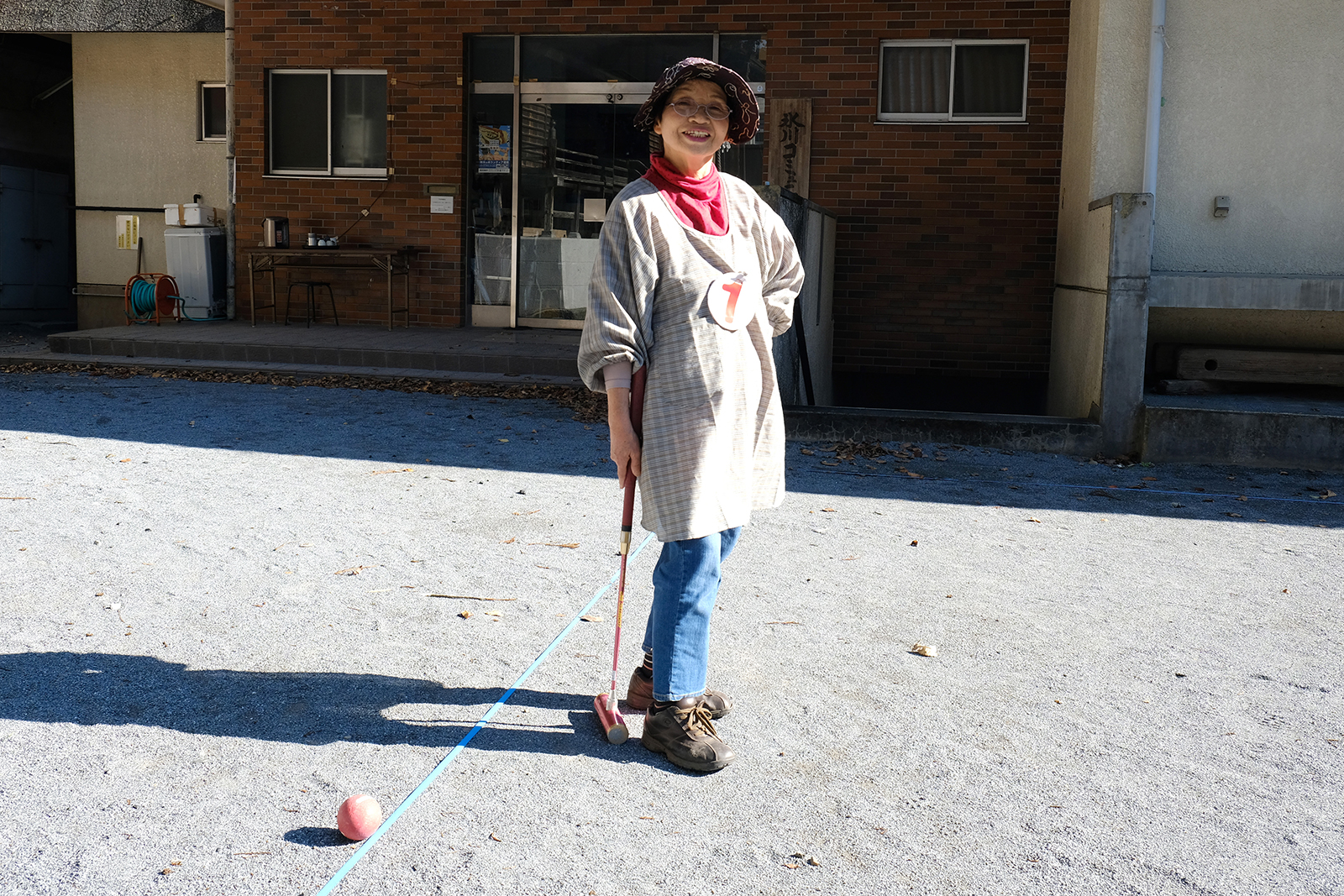 Fujiko Masuda runs a popular Japanese-style pub.
Fujiko Masuda runs a popular Japanese-style pub.
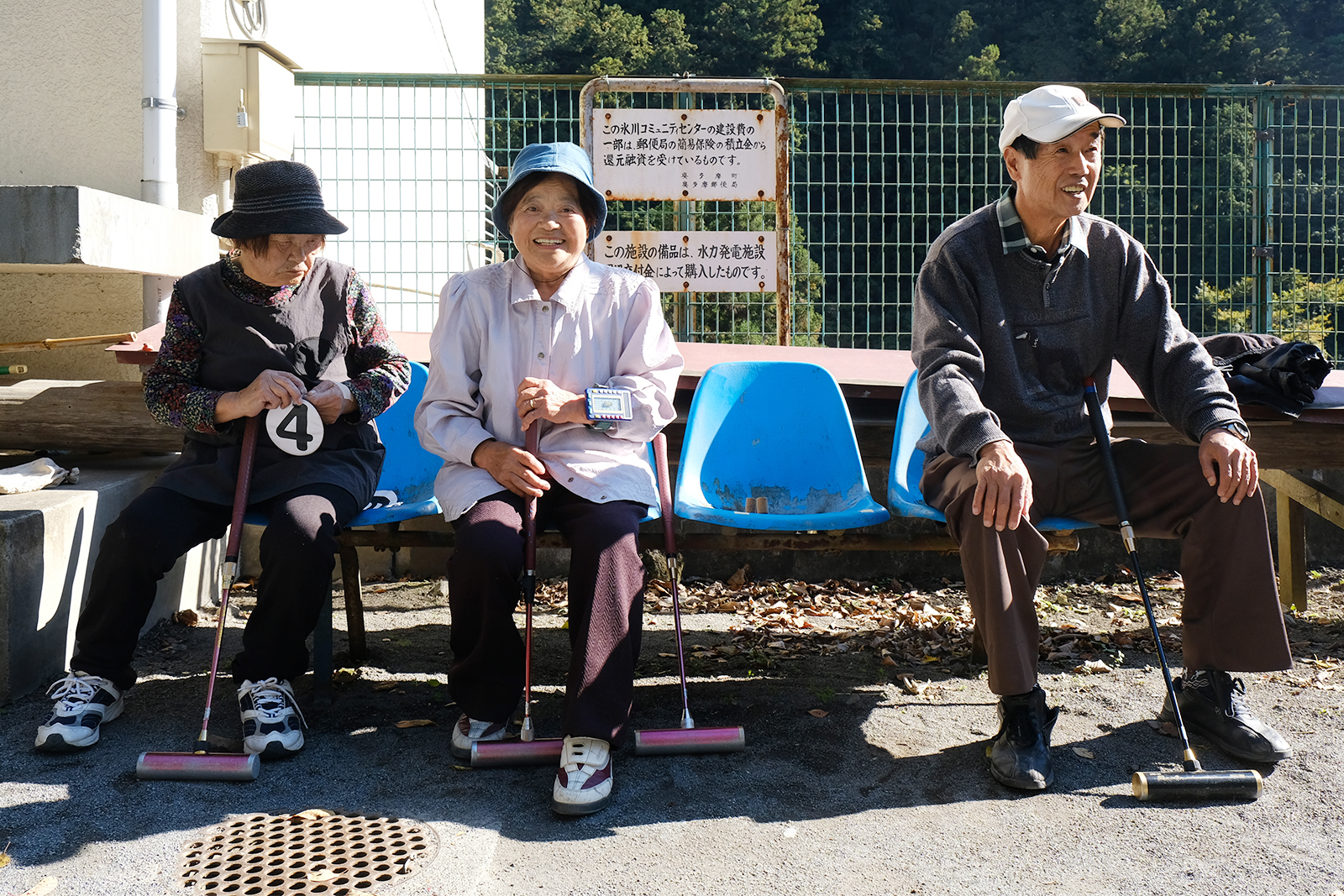 They remember when the timber trade boomed.
They remember when the timber trade boomed.
Many of those properties were poor quality, said Hidetaka Yoneyama, a senior researcher at the Fujitsu Research Institute. As a result, about 85% of people opt to buy new homes.
Japanese laws also don't help things.
In 2015, the government passed a law designed to penalize those who leave houses empty, in a bid to encourage them to either demolish or refurbish their properties. However, akiya owners are taxed more for empty plots of land than for having an empty property, according to real estate expert Toshihiko Yamamoto. This is a deterrent to razing a vacant home.
Urban planning regulations are also weak in Japan, said Chie Nozawa, a professor of architecture at Toyo University in Tokyo, meaning developers can keep building houses despite the glaring surplus.

Kazutaka Niijima inside one of the akiya that Okutama will give away for free in 2019.
Making rural areas alluring
In Okutama, revitalization official Niijima has found families for nine vacant houses so far. They've come from places including New York and China -- the akiya scheme is not limited to Japanese citizens.
Filipino-Japanese couple Rosalie and Toshiuki Imabayashi, who live in central Tokyo with their six children, will move to the town in early 2019.
"It was getting too cramped for us in Tokyo and we liked that Okutama was within the same prefecture but surrounded by nature," Rosalie said.
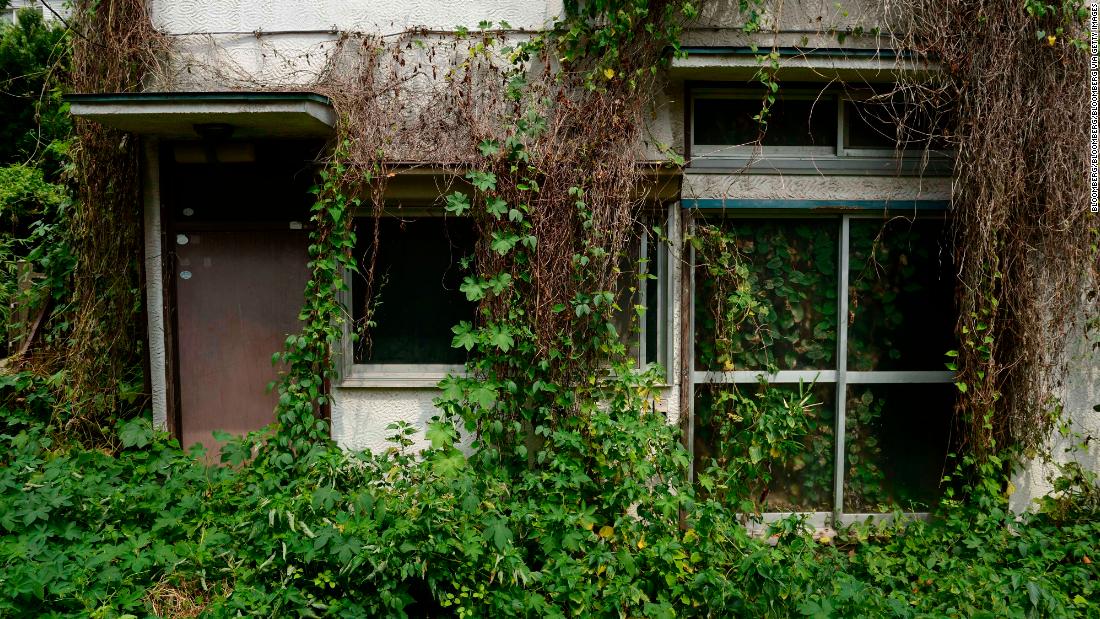
Overgrown vegetation surrounds a vacant house in the Yato area of Yokosuka City, Kanagawa Prefecture. Empty homes are an issue across the country.
For most newcomers, though, free homes are not enough. Depopulated areas like Okutama also need a sustainable economic development plan -- and community-building activities between locals and newcomers -- if they are to thrive.
"If people can find a way of engaging in productive economic activities and supporting themselves, they will come and stay in rural areas," said Jeffrey Hou, an architecture professor at Washington University.
Kamiyama, a town in southern Japan, added more people than it lost in 2011 after IT companies set up satellite offices there, attracting workers keen to escape city life.
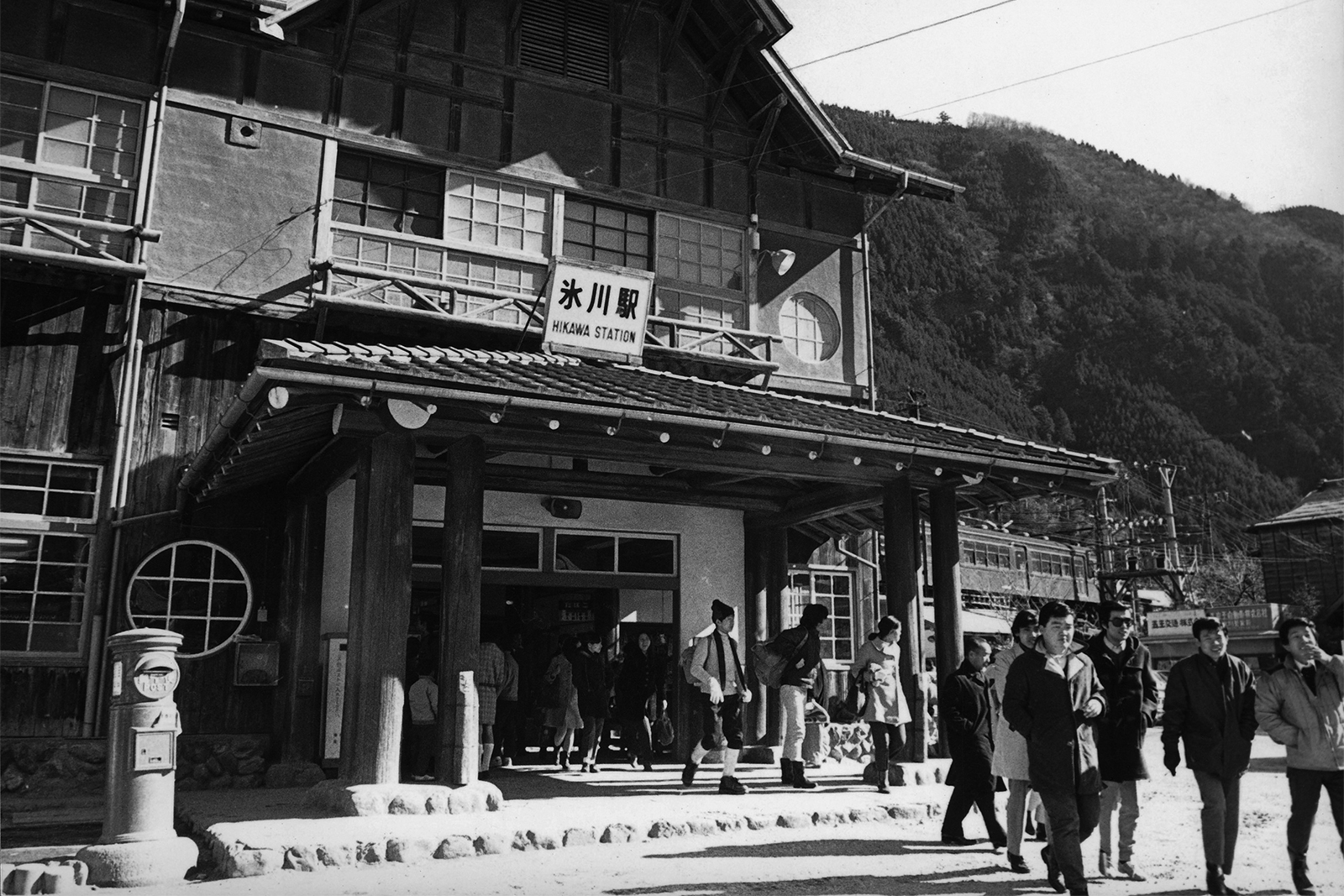 Okutama station was previously called Hikawa station.
Okutama station was previously called Hikawa station.
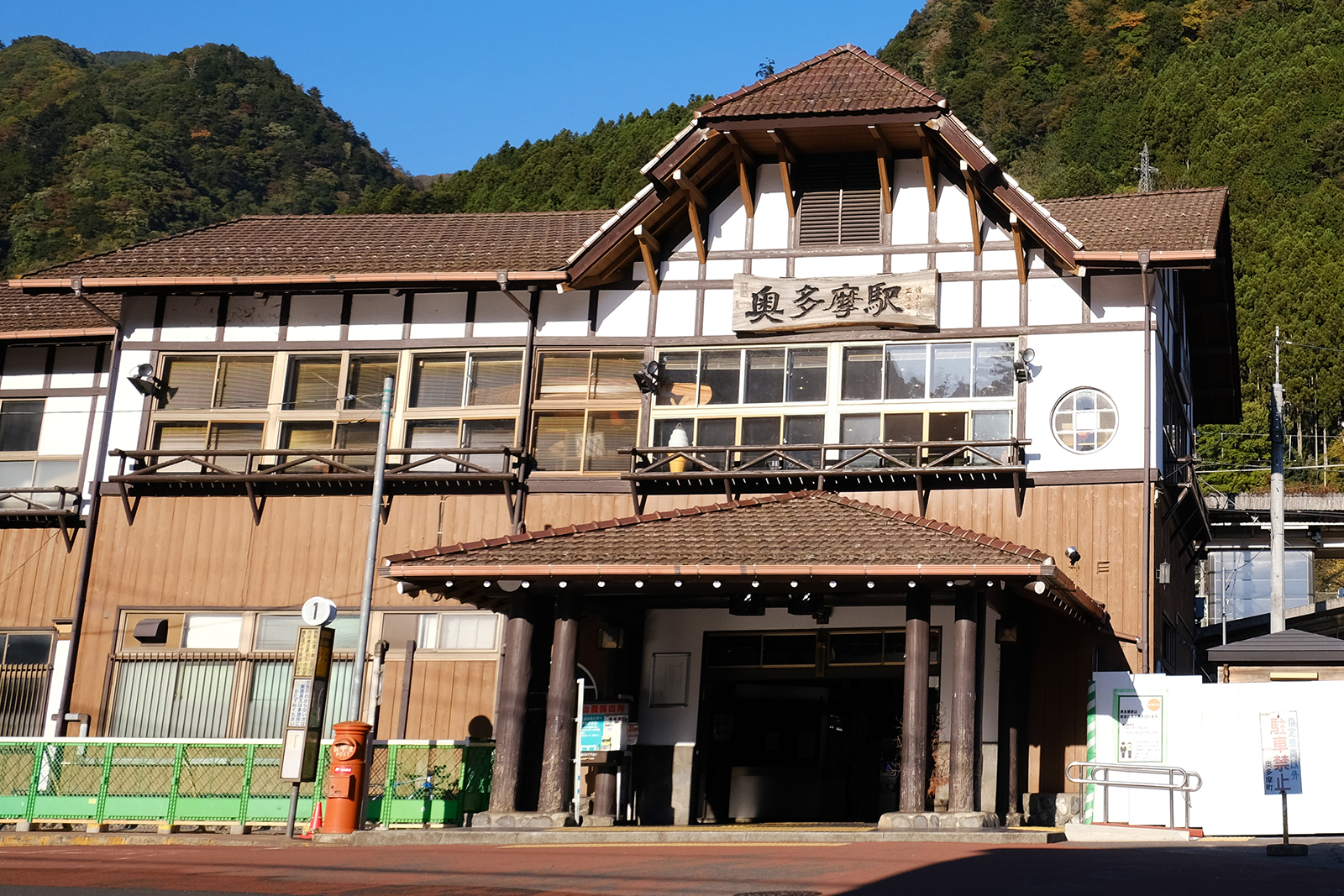 Okutama station, October 2018.
Okutama station, October 2018.
The ingenuity of new residents is also a boon for fading towns.
Certified as caregivers for the elderly, the Idas knew they would have job opportunities in Okutama. However, in September 2017 they tried a new venture, buying and converting a second-hand "kominka" -- a Japanese house more than 100-years-old -- into a roadside cafe catering to roving hikers and bikers.
"The beauty of this place lies in retrofitting something that already exists," said Naoko, inside the cozy cafe, which brims with vintage objects and local craft work. "Some people like this culture and really like old things but they hesitate about committing to rural life."
On their quiet street, there is another empty house and the home of an elderly woman.
Before the Idas came, wild monkeys kept eating the woman's vegetable patch -- now the area is busier, the animals keep their distance.
Yet while Naoko has found a permanent home for herself in Okutama, she shakes her head when asked whether her children see a future there.
"Actually, my eldest daughter says she can't wait to leave home and rent a place of her own in the city," she said.
https://www.cnn.com/2018/12/05/asia/...a-ghost-homes/NO AMNESTY
Don't reward the criminal actions of millions of illegal aliens by giving them citizenship.
Sign in and post comments here.
Please support our fight against illegal immigration by joining ALIPAC's email alerts here https://eepurl.com/cktGTn
-
12-15-2018, 04:35 PM #2NO AMNESTY
Don't reward the criminal actions of millions of illegal aliens by giving them citizenship.
Sign in and post comments here.
Please support our fight against illegal immigration by joining ALIPAC's email alerts here https://eepurl.com/cktGTn
-
12-15-2018, 04:49 PM #3
We have 25 million illegal aliens and their families to deport. Send them to Japan!
ILLEGAL ALIENS HAVE "BROKEN" OUR IMMIGRATION SYSTEM
DO NOT REWARD THEM - DEPORT THEM ALL
-
12-16-2018, 12:48 AM #4
Japan needs immigrants, but do immigrants need Japan?
By Emiko Jozuka, CNNUpdated 8:23 PM ET, Fri December 7, 2018The series on Japan's demographic reckoning is supported by the Pulitzer Center on Crisis Reporting. None of the material in this series may be reproduced without an explicit credit to CNN and the Pulitzer Center.
Tokyo (CNN)One of the first concepts Linh Nguyen learned while studying Japanese was "uchi-soto."
It refers to the practice of categorizing people into one of two groups -- insiders or outsiders. Family, friends and close acquaintances are insiders, referred to as "uchi," while "soto" is for those relegated to the periphery.
Japan's new immigration law
A proposed amendment to the immigration law, if passed, will create two new visas for foreign workers.
The first, renewable for up to 5 years, would cover semi-qualified, blue-collar workers, and is aimed at plugging gaps in areas such as care-giving and manufacturing.
The second type, which would have no renewal limit, is aimed at attracting high-skilled workers. Both visas require proficiency in Japanese.
For this Japan-obsessed student in Vietnam, it felt like a warning: she could be about to enter a deeply closed society that would always consider her an outsider.
Ultimately, though, that was not Nguyen's experience. The 25-year-old discovered that Japan was slowly changing.
As Japan's population gets older and smaller, the government is struggling to balance its own deeply conservative views on immigration with the need for new and younger workers. Public opinion is on the side of change. Despite perceptions of xenophobia, a 2018 Pew survey revealed that 59% of Japanese believed immigrants would actually make the country stronger.
This week, Japanese lawmakers approved a policy change proposed by Prime Minister Shinzo Abe that will create new visa categories to allow an estimated 340,000 foreign workers to take both high-skilled and low-wage jobs in Japan over the next five years.
While this represents a major shift in Japan's approach to immigration, many experts argue it doesn't go far enough.
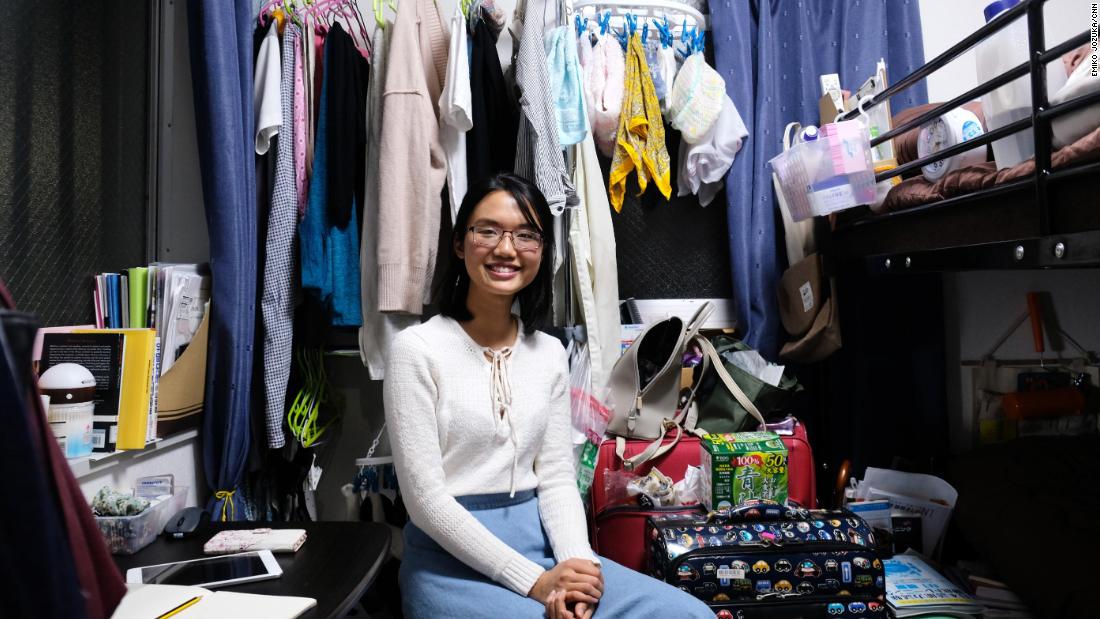
Vietnamese student Linh Nyugen came to Japan to pursue higher education.
Shrinking nation
Japan is already a "super-aged" nation -- meaning that more than 20% of its population is over 65 years old. Just 946,060 babies were born in 2017, a record low since official records began in 1899, while an increase in deaths accelerated the population decline.
The decline means a shrinking cohort of workers is left supporting an increasingly elderly population in need of healthcare and pensions.
But Japan isn't the only country with such a problem.
Germany is a also a "super-aged" nation. And by 2030, the US, UK, Singapore and France are expected to have earned that status. While the EU and US veer towards populism and adopt anti-immigrant stances, in Asia nations are competing for new arrivals, potentially reversing the power balance between immigrants and host countries.
If Abe is to prevent Japan's population from dipping below 100 million by 2060, he will need to provide migrants good reasons to choose the country, says Hisakazu Kato, an economics professor at Meiji University in Tokyo.
A 2015 Pew survey exploring how people in Asia-Pacific see each other revealed that a median of 71% of people in the region held a favorable view of Japan, with positive views exceeding negative sentiment by more than five-to-one.
Nguyen points to Japan's solid environmental practices and strong safety record as appealing factors.
But the country's historic failure to integrate previous waves of foreign workers raises questions as to why migrants would choose to come to Japan.
Faced with labor shortages in the 1990s Japan revised its immigration rules to offer long-term, renewable visas to the descendants of Japanese immigrants who had moved to Latin American after World War II.
But when the economy slumped in 2008, the government urged those same immigrants to return to Brazil and the other Latin American nations where they had moved from.
"Japan treats its foreign workers like Kleenex," says Jeff Kingston, a Japanese studies professor at Temple University. "They have a use-it, toss-it mentality."
Other options nearby
Singapore has a very different track record. Since independence in 1965, the small South-east Asian city state has built a diverse society by taking in large numbers of immigrants from neighboring Asian countries.
Today, foreigners make up more than one-third of Singapore's labor force, though conditions are challenging for low-skilled laborers and numerous abuses exist.
On its website, the Singapore government states that non-resident foreigners do jobs Singaporeans don't want, and do not compete with locals for high-paying professional or managerial jobs. "They are here to help build our homes, keep our roads clean, and make our lives just a little more comfortable," the website says.
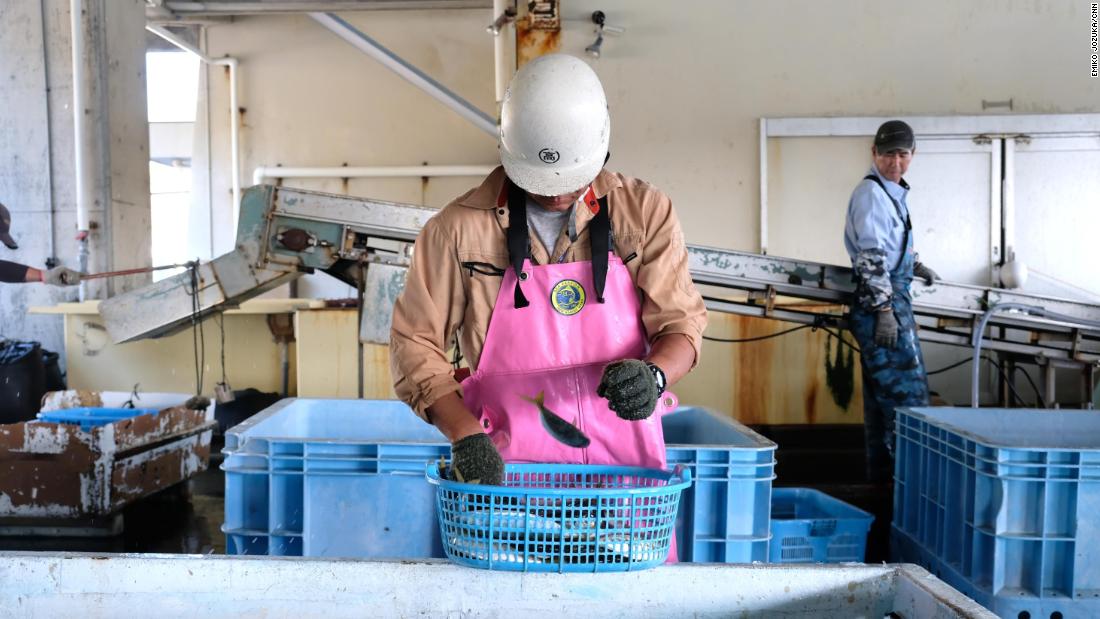
The new visa will allow blue collar workers to stay in Japan for up to five years.
Experts argue that Japan lags behind other industrialized countries in extolling the benefits of immigration to its domestic population. "The government needs to sell how these people contribute to pensions and economic growth," Kingston says.
As immigration policy has failed to keep up with demand, temporary fixes have plugged the gap.
Foreigners on student visas, for example, can work up to 28 hours per week -- but Japan has been accused of using students to fill labor shortages.
Nguyen, who is studying for a masters degree, is one of thousands of young international students and foreign workers trying to make a go of it in Japan. In 2018, the number of foreign residents reached a record high of 2.5 million, although that's still only 2% of Japan's total population.
On a bustling Tokyo side street is the office of Inbound Japan, a concierge service and cultural interpreter for foreign students struggling to navigate living and working in Japan.

Yusuke Furumi at work in the Inbound Japan office with his Vietnamese colleague, Angel Phan.
Five years ago, Inbound Japan started providing foreign students with cheap dorm rooms. Its range of services grew as people wanted help getting phone contracts, setting up bank accounts, going to hospital and finding part-time jobs.
Yusuke Furumi, an employee there, hopes Japan can gradually become more open to the idea of working alongside foreigners, and make it easier for them to stay and contribute to the economy and society.
Enter the outback
In the small town of Muroto, in southeastern Japan, foreigners on the Technical Intern Training Program (TITP) have come to the rescue.
Once a booming fishing port, today Muroto has a graying community. Vacant houses pockmark the area where the town's bars once thrived. Many of the town's public facilities such as hospitals and elementary schools have shut down.
So when Mie Kinoshita was unable to find a mechanic to work in her car dealership in 2017, she decided to outsource her needs -- and applied to receive technical interns from the Philippines.

John Riggs Ancino is shadowing Masahiro Maeda.
The scheme has faced frequent criticism since its establishment in 1993. In theory, the TITP allows low-skilled workers to come to Japan to learn technical skills they can later take back to their home countries. But opponents of the program allege it has been used as a loophole to plug gaps in the domestic labor market.
Trainees, meanwhile, have reported frequent instances of workplace abuse and bullying.
Kinoshita was aware of the horror stories. To help create a more welcoming environment, she bought a house for her staff. And while they presently only make minimum wage, which is 762 yen ($6.70) an hour in Muroto, she hopes to increase their wages as their skills grow.
Kinoshita's employees John Riggs Ancino and Marvin Curilan, arrived in Muroto from the Philippines two months ago. On arrival in Japan, the pair received several weeks of Japanese language and culture lessons.
"I'd like to stay here," says Riggs Ancino, who worked in a tire repair shop back home. "It would be great if I could build a family in Japan."
Their Japanese colleagues also appreciate the newcomers.
"It's still hard for us to understand one another, but I've been working on my English skills," says Masahiro Maeda, a mechanic in his late 50s. "I'd like them to stay."
Masoto Yasuda, a mechanic in his late 30s, adds: "I want to go to the Philippines now. It hadn't really crossed my mind before I met them."

Both local and foreign workers at the car dealership said they hoped the immigrants could stay in Japan.
Under the current rules, technical trainees can only work in Japan for five years.
Abe's proposals, however, would allow them to apply for an additional five years. But there's a catch. To do so they would have to apply from their home countries, denying them the right to seek permanent residency -- which requires 10 years of continuous living in Japan.
Experts fear terms like this may run through many of Abe's new proposals, helping more blue collars workers come to Japan -- but preventing them from settling long term.
Japan's work culture
While Japan might be coming around to the appeal of foreigner workers, not all of the newcomers are keen on Japanese work culture.
Samir Levi came to Japan from Nepal four years ago, after his older brother did a six-week cultural exchange in Tokyo. Levi, 26, worked a part-time job as a dishwasher in a ramen shop and the graveyard shift at a convenience store, before becoming a recruiter for a Japanese language school in the capital.
He has absorbed the Japanese habits of gently bobbing the head in agreement and executing a well-timed farewell bow. "I blend in here now," he says. "I've become Japanese in some ways."

Levi meets up with friends in Shin-Okubo, an area of Tokyo split along gastronomical lines.
But the longer Levi lives in Japan, the less he wants to stay. Now a salary man, Levi clocks long hours -- just like locals. Earlier this year, the government limited overtime to 100 hours per month, but Levi yearns for better options.
Now he wants to move to the US or Australia.
Nguyen, too, has integrated into Japan and has a mix of local and migrant friends. But she is wary of committing to Japan's long working hours and culture of heavy out-of-office drinking with colleagues, known as "nomikai."
She would stay in Japan, she says, if she could bring her parents to live with her. Failing that, she might move to Australia or Canada or go back to Vietnam.
"I haven't lost my fascination with Japan yet," Nyugen says. "But perhaps Japan may need to realize that it needs foreigners as opposed to the other way around."
https://www.cnn.com/2018/12/06/asia/...ers/index.htmlNO AMNESTY
Don't reward the criminal actions of millions of illegal aliens by giving them citizenship.
Sign in and post comments here.
Please support our fight against illegal immigration by joining ALIPAC's email alerts here https://eepurl.com/cktGTn
-
01-14-2019, 03:02 PM #5NO AMNESTY
Don't reward the criminal actions of millions of illegal aliens by giving them citizenship.
Sign in and post comments here.
Please support our fight against illegal immigration by joining ALIPAC's email alerts here https://eepurl.com/cktGTn
-
01-16-2019, 07:05 PM #6NO AMNESTY
Don't reward the criminal actions of millions of illegal aliens by giving them citizenship.
Sign in and post comments here.
Please support our fight against illegal immigration by joining ALIPAC's email alerts here https://eepurl.com/cktGTn
Similar Threads
-
25,000 vacant homes in Philadelphia, 600 torn down each year
By JohnDoe2 in forum Other Topics News and IssuesReplies: 4Last Post: 05-27-2014, 04:59 PM -
JAPAN TURNS OFF, TUNES IN, AND DROPS OUT - end stage of Japanís death spiral
By AirborneSapper7 in forum Other Topics News and IssuesReplies: 0Last Post: 10-22-2013, 08:17 AM -
First US, Now Japan: S&P Revises Japan Credit AA- Outloo
By AirborneSapper7 in forum Other Topics News and IssuesReplies: 0Last Post: 04-27-2011, 04:30 PM -
Record 19 Million U.S. Homes Stood Vacant in 2008 (Update3)
By AirborneSapper7 in forum illegal immigration News Stories & ReportsReplies: 0Last Post: 02-10-2009, 05:29 AM -
Investor Buys Dreg Homes from Bank - 12 Homes for $35,250
By AmericanMe in forum Other Topics News and IssuesReplies: 0Last Post: 01-17-2008, 11:37 PM


 1Likes
1Likes LinkBack URL
LinkBack URL About LinkBacks
About LinkBacks




 Reply With Quote
Reply With Quote


Oklahoma House passes bill making illegal immigration a state...
04-19-2024, 05:14 AM in illegal immigration News Stories & Reports